Tail-docking has been around for hundreds of years, but in recent times it has become a controversial issue along with other cosmetic procedures for dogs, like ear-cropping and dewclaw removal.
It was originally done on working-type dogs whose tails might get in the way of carrying out their duties. With time, it became a common look for certain dog breeds, which is why it was included in their breed standards set by different dog clubs or organizations.
Rottweiler tail docking also has a long history since this breed was used for many different jobs. Nevertheless, modern Rotties are usually family pets and not working dogs, which poses the question of if there really is a need for tail-docking today.
Some countries believe that there isn’t, which is why they’ve completely banned or restricted it, while others still uphold the tradition.
Are there justified reasons for docking, or is it unnecessary cruelty? This article will give you insight into the different opinions about this issue, so let’s begin with an explanation of the procedure itself.
What is tail docking?
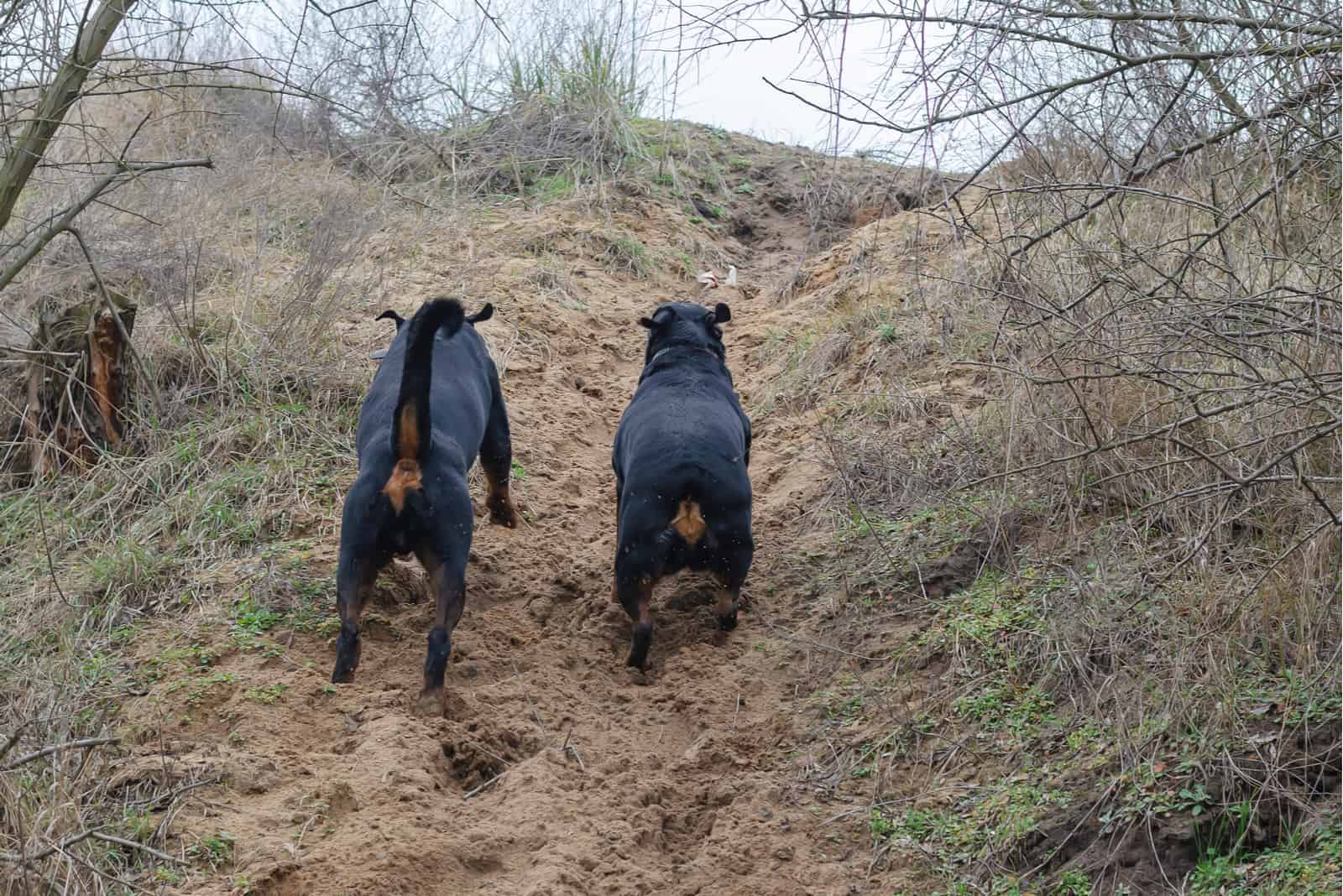
Tail docking is the surgical removal of a dog’s tail for either practical or cosmetic purposes.
There are actually two types of tail-docking :
1. Prophylactic docking, which is the removal of the tail in puppies up to 5 days old without the use of anesthetic.
2. Therapeutic docking where a diseased or damaged tail is removed for medical reasons under general anesthesia in dogs of any age.
Prophylactic docking is the one causing all the controversy that we’ll be discussing in this article. It’s been traditionally done to over seventy breeds of working dogs with the justification that it helps them carry out their tasks better.
However, many family dogs that aren’t active in the field have docked tails, too, simply because they belong to a specific breed. This results from breeders trying to fit the breed standards set by the national dog clubs or dog owners preferring a certain look for their dogs.
The tail docking procedure includes cutting the tail with a pair of scissors or causing it to drop off by stopping the blood supply with a tight rubber band.
There are opposing opinions on how painful it is for the puppies and if it’s even necessary, which is why it’s banned in some countries along with ear-cropping and dewclaw removal, while it’s still common in others.
For example, you won’t see a German Rottweiler with cropped ears, but this is a common sight in the U.S.
Ear-cropping is the removal of the floppy part of the ear and sometimes involves taping and bracing the ears to get them to stand upright. It’s also done on working-type dogs because of the belief that it improves their hearing abilities which are of great importance for guarding and hunting dogs.
Some of dog breeds in which tail docking is a common practice are Australian Shepherds, Jack Russels, Pembroke Welsh Corgis, and Dobermans.
Is it cruel to dock a dog’s tail?
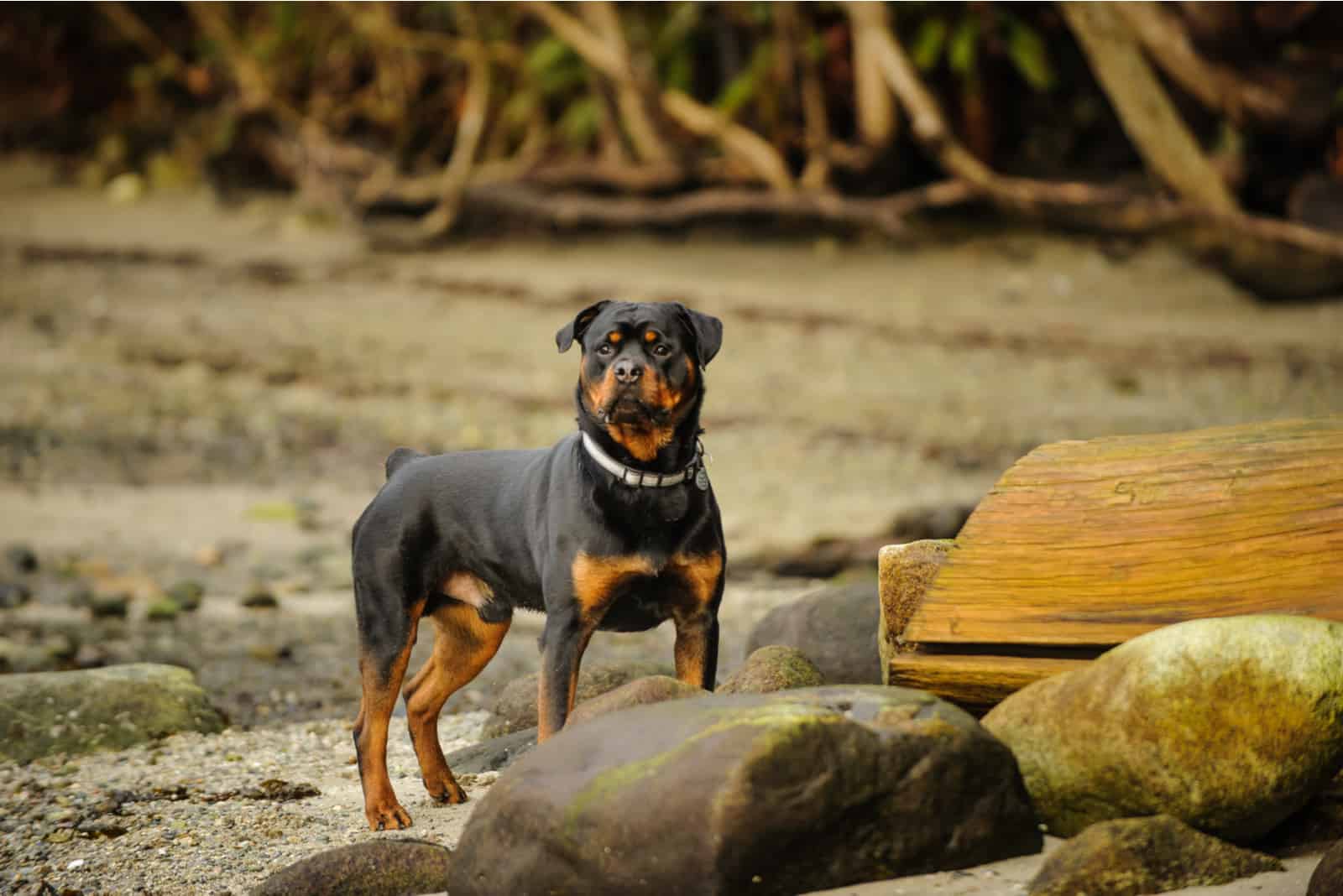
This age-old practice has been followed by the misconception that it doesn’t cause pain, which may be why it became so widely accepted. It was believed that the puppy only feels slight discomfort during the procedure since its nervous system isn’t fully developed yet.
However, recent studies revealed that the truth is actually the opposite. Today, many veterinarians agree that Rottweiler tail-docking causes immense pain to puppies, even greater than in adult dogs, due to the way impulses travel in their undeveloped inhibitory pain pathways.
What was once seen as a sign that the dog is fine after undergoing this procedure, could have, in fact, been a pain response. Due to their strong self-preservation instinct, dogs often hide their pain well so they wouldn’t alert predators of their weaknesses.
A puppy will most likely express its pain through vocalization. The Veterinary School of the University of Queensland conducted a study that has shown that out of fifty puppies that underwent tail-docking surgery, all fifty yelped during the procedure.
When puppies return to nursing shortly after they’ve had their tails docked, they likely look to ease their suffering through suckling, which releases natural pain-relieving endorphins.
What adds to their pain is that anesthesia or other pain relievers can’t be used afterward because it would be dangerous due to their young age and small size.
Considering what we know today, it’s not surprising that many countries have banned this practice altogether or at least restricted it in some way. Why inflict unnecessary pain on creatures we claim to love so much?
German vs. American Rottweiler: It’s all about the tail!

The Rottweiler breed originated in Germany during Roman times, making it one of the world’s oldest dog breeds. Their initial purpose was herding livestock, but the Rott’s excellent instincts and strong build helped them transition into guard dogs, which is what we usually know them as today.
The first Rottweiler breed standard was set in 1901, after which these courageous, loyal pups with great working skills spread across the globe.
The Rottie eventually made its way to America, where it was officially recognized by the American Kennel Club in 1931. From then on, their popularity continued to increase, making them one of the most popular dogs in the USA today.
However, Americans and Germans didn’t quite agree on what the Rottweiler needed to be, which led to the differentiation between the American and German Rottweiler.
These subtypes of the breed are so alike that it’s hard to tell them apart, even for extreme Rottweiler enthusiasts.
What makes the distinction possible is that the AKC and The Allgemeiner Deutscher Rottweiler -Klub, the official Rottweiler club of Germany, use different standards to determine if a dog can be registered as purebred.
American Rottweilers are slightly smaller on average than their German counterparts since the dogs that don’t fit the correct weight of 110 pounds for males and 92 pounds for females set by the ADRK are accepted as well.
The Germans also pay more attention to a dog’s character to preserve the breed’s original traits and make sure they are both suitable companions and good working dogs. They don’t tolerate any signs of aggression or shyness, while the AKC has less strict rules.

Photo from @rott.apollo
Regardless of all their similarities, there is still one thing that will let you know right away where the pup comes from. It’s their tails!
The Rott’s tail is very important in Germany. A kinked tail, a ringtail, a natural bobtail, or a tail with strong lateral deviation are all considered eliminating faults. Only dogs with natural tails can be registered in this country. Tail-docking and ear-cropping have been banned since 1999.
On the other hand, these practices are still carried out in the USA, and they are embedded in their breed standards. According to the AKC, an American Rottweiler needs to have a docked tail.
That means even a puppy born to two purebred parents can’t be registered if it keeps its natural tail.
Not all Rotties in America have docked tails, though. Breeders usually let the future owners decide. Those who would like their dogs to keep the tails need to let them know before the puppy is born.
As this practice has become less popular in recent years, especially for family pets that don’t need to work in the field, many owners opt for natural tails.
Is docking a Rottweiler’s tail illegal?

In the last forty years, many countries have banned tail-docking, as well as other similar procedures for dogs. This includes the United Kingdom, a large part of other European countries, as well as Australia, Turkey, and some South American countries.
Quite a few veterinary associations in Canada don’t allow their veterinarians to perform any cosmetic surgeries on dogs, so even though it’s not illegal in this country, it is not easily done.
It is still unrestricted in the United States, even though animal welfare organizations are putting huge pressure on them to abandon this practice. It resulted in the American Kennel Club allowing dogs with natural tails to participate in their events. However, they still firmly stand behind their conviction that docking serves a practical purpose and can be beneficial to dogs.
Why is the Rottweiler’s tail docked?
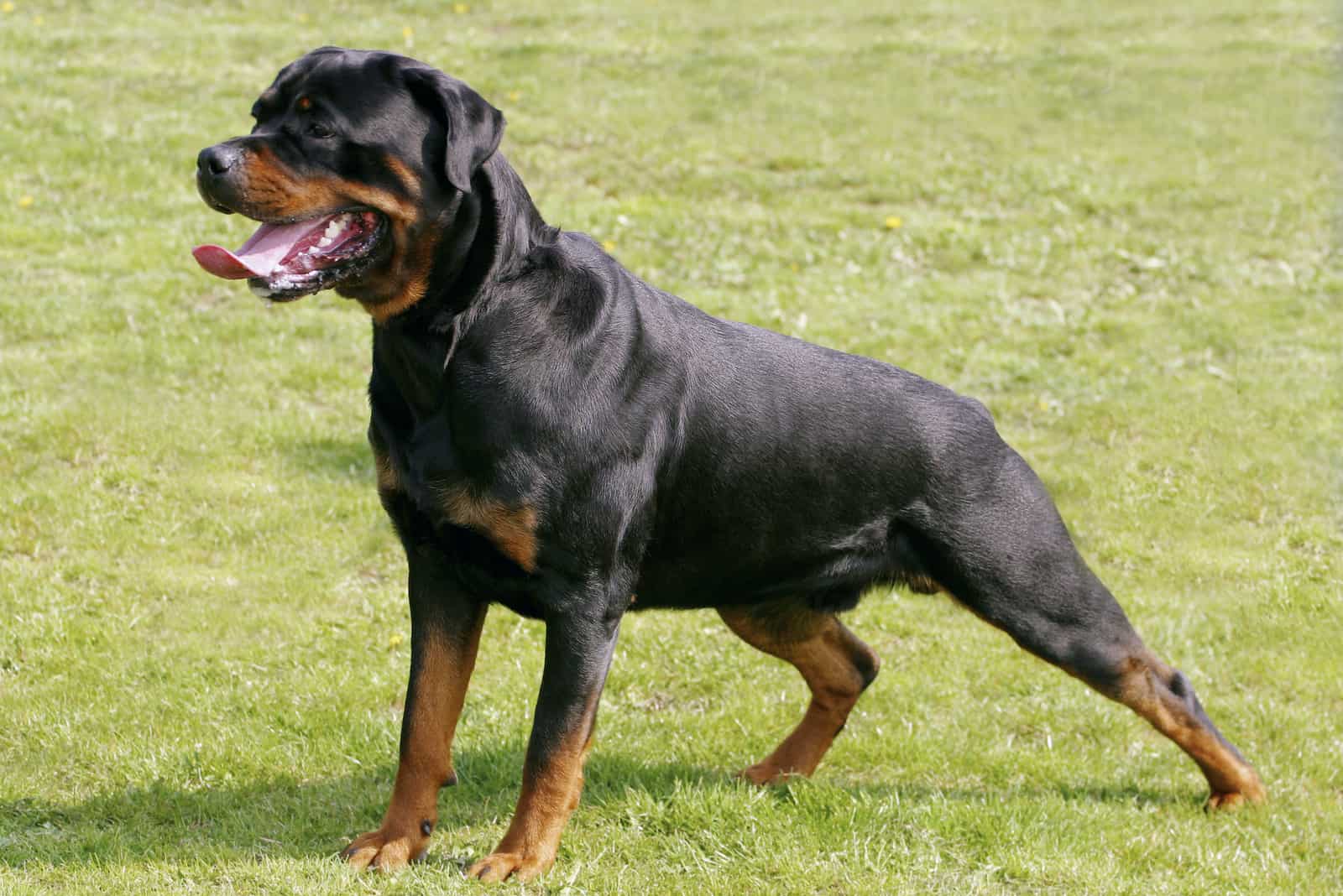
Tail-docking is done in many breeds of working dogs, but it might be most common in Rottweilers. The reasons for this vary from keeping the dog safe to having a dog that looks more intimidating or being able to participate in dog shows.
This practice dates back to Ancient Rome, where they cut off the dogs’ tails because they falsely believed it would protect them from contracting rabies.
The reasons for it later shifted to more practical ones. It was thought that herding dogs and hunting dogs ran a higher risk of tail injuries while working in rough terrains, so docking would protect them from harsh bushes and animal bites.
Since Rottweilers are often used as guard dogs, one more explanation for Rottweiler tail docking is that their tails could be grabbed while protecting property, leading to injury.
Another job that Rottweilers have been known for is carting. Throughout history, they’ve been used to pull all sorts of heavy things on carts due to their strong, muscular build. Since having a tail could get in the way of this activity, it was usually docked.
A study conducted by the University of Glasgow has proven this to be true for working-type dogs. However, dogs that don’t have to work are susceptible to tail-related injuries as much as any other dog, regardless of their breed.
The main reason behind the Rott’s bad reputation is its intimidating appearance. Some owners believe a wagging tail diminishes that image, so they choose to have it docked if they’re going to use them as protection dogs. Some simply prefer how it looks.
The Rotties of today are more often kept as pets than they are for working, so modern tail-docking is usually done for cosmetic purposes.
A cropped tail was a must for pups competing in dog shows held by the AKC until 2019. Even after they allowed dogs with undocked tails to enter, those with short tails still do better. Other organizations that hold these events around the world, like the UKC, prefer dogs with long tails.
Since The Rottweiler club of North America follows the FCI standard for the breed, they also require show dogs to have natural tails to enter their events. That means that even for American Rotties, tail-docking is becoming less common.
Some pet owners also believe that keeping their dogs’ tails long leads to more hygiene issues. This doesn’t seem to be true for all the other long, bushy-tailed breeds of dogs, so why would it be for Rottweilers?
The same can be said about dogs knocking things over with their tails. Rotts aren’t any less capable of maneuvering around the house than other dogs, so this can’t be a justifiable reason to cut their tails off.
When should a Rottweiler’s tail be docked?

If you are going to have your Rottweiler puppy’s tail docked, it needs to be done up to five days after birth. It’s usually done when they’re two or three days old because it’s believed they won’t remember the pain that way.
After that period, docking a dog’s tail is considered major surgery, and it’s performed only because of tail-related health issues under general anesthesia.
Tail-docking in young puppies is sometimes done by Rottweiler breeders themselves, but it’s better for certified veterinarians to perform it to avoid any complications.
Today, many vets refuse to do tail amputations on ethical grounds unless there is a medical reason for them. According to the American Veterinary Medical Association or the AVMA, performing this procedure for cosmetic purposes isn’t justified. Numerous other animal welfare organizations in parts of the world where it’s still legal also strongly oppose it.
The benefits of keeping the Rottweiler’s natural tail
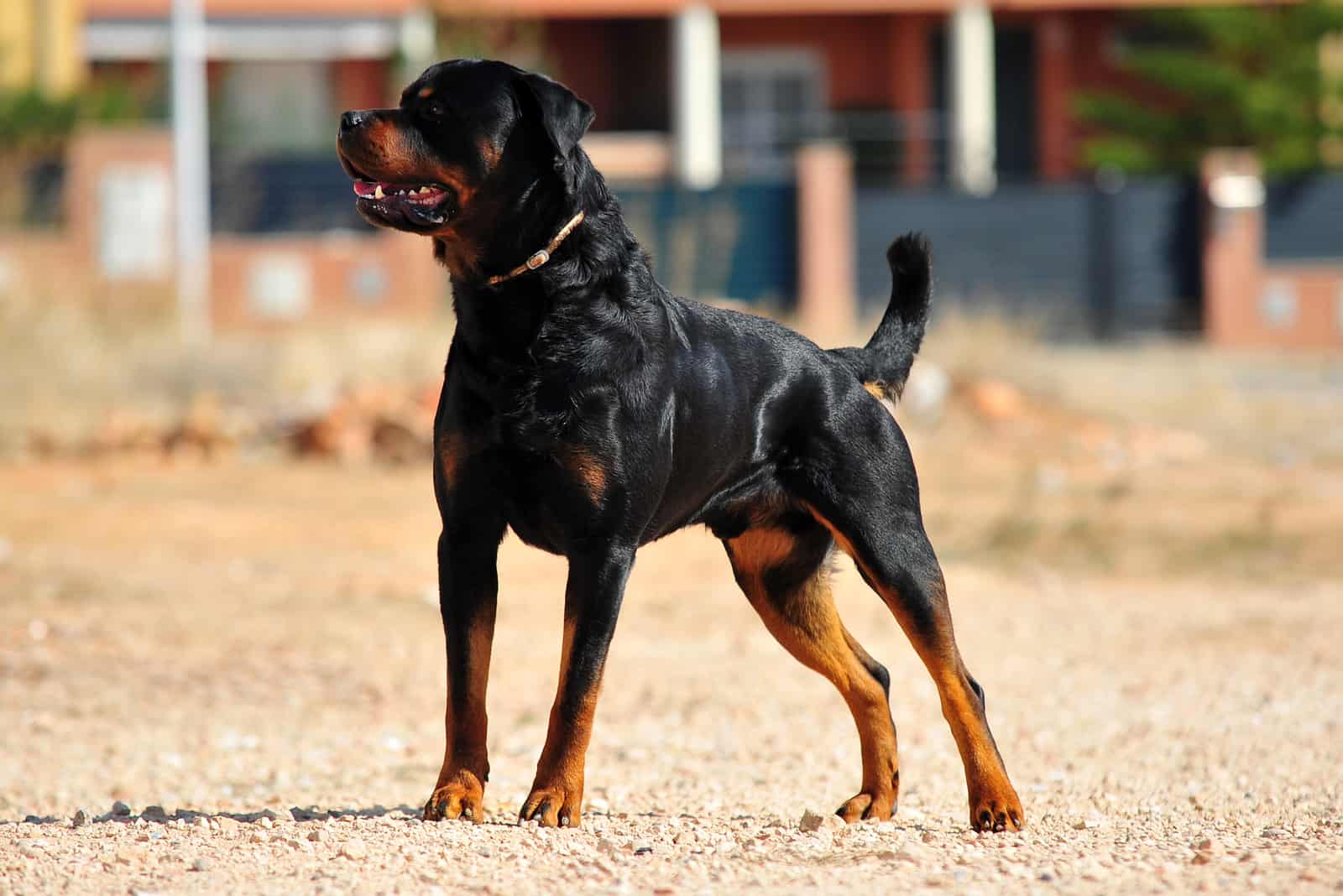
There are numerous benefits to keeping the Rottweiler’s tail long, especially if they’re only your furry companions that don’t have a practical need for docking.
The most obvious reason why so many people choose not to have the puppies’ tails docked is that they don’t want to expose them to unnecessary pain. We’ve already determined that docking their tails is extremely painful for dogs despite all the false beliefs.
It involves cutting through muscle, bone, and very sensitive nerves, so how can it not be?
Not only does it cause pain while it’s being done, but puppies also suffer while the wound is healing.
Rottweiler tail-docking is often done by breeders themselves instead of licensed vets, which increases the risks of different complications. When it’s not performed correctly, it can cause tail neuroma, which is characterized by long-term chronic pain and distress.
Considering all of this, it just seems wrong to let your best friend go through something like that just to have a specific appearance.
On the other hand, some owners actually prefer how Rotts look with their tails long, so it isn’t a tough decision for them.
Another benefit of keeping a dog’s tail is that it helps them communicate better. Dogs use body language for communication with both other dogs and animals, including us humans.
Observing dogs’ tails can help us understand how they feel. Tail wags convey all sorts of emotions, from happiness and excitement to nervousness and submission.
When we try to imagine a happy dog in our minds, it’s almost always a dog with a wagging tail, so why would we want to deprive Rotties of being able to express themselves?
Not having a tail can lead to Rottweilers being misunderstood not only by people but also by other dogs. Tails play an important role in dogs’ social interactions, their position can indicate friendliness, or it can be a warning sign.
Read More: Dog Tail Position Chart
When other dogs aren’t able to read their social cues, Rotties might resort to aggression as a defense mechanism. The same can happen when strangers misunderstand their behavior, which means that not having tails may be contributing to the Rottweiler ‘s bad reputation.
One more good thing about letting a dog keep its tail is that it improves their counterbalance, making them more agile. With their long careers in herding and other jobs, Rottweilers needed to be fast and nimble, and their long, strong tails definitely helped them with this.
On the other hand, Docked dogs have a harder time running and swimming than their undocked counterparts, so they have to work more to compensate for their loss.
In conclusion

The Rottweiler tail docking practice has a long history, but whether or not it’s a tradition worth preserving is up for debate. Tail Docking has been a common practice in both Rottweilers and its crossbreeds, such as a Cane Corso Rottweiler mix or even a mix with a Chow Chow.
Some believe that there’s a practical need for it, especially in working-type dogs, while others believe it to be unnecessary and cruel.
The question of docking is also what differentiates American from German Rottweilers. The breed standards in the USA require Rottweilers to have their tails docked, while the Germans require them to have long tails to be registered by the ADRK.
There are many reasons why some owners opt to have their dogs’ tails docked, some simply prefer how it looks, and others do it because they believe it improves the dog’s guarding skills.
On the other hand, there are also various benefits of keeping a dog’s tail intact. It improves their counterbalance and enables them to run faster and swim better, it helps them express their emotions, and most importantly, it doesn’t cause any pain.
If you’re a future Rottie owner that is trying to decide between docking and not docking, there are few things you might want to keep in mind.
You’ll first need to check whether it’s even legal in your region. If it is and you do want to get a docked Rottweiler puppy, then the next step is to look into reputable breeders in your area. A good breeder will ensure that the docking is carried out in the most humane way possible.
However, if you live in the USA and you’d like your new puppy to have its original tail, you’ll need to notify the breeder in advance since many abide by the standard and perform the procedure automatically.
If you only need a friend and not a dog for a specific task, there really aren’t any benefits to tail-docking. Therefore, you should think about whether the pain your puppy will go through is worth it.
With or without tails, Rottweilers are definitely impressive dogs. Always looking out for their owners, these loyal dogs will be both your best friends and your protectors.
Read Next: What Are Rottweiler Aggression Signs And What Can Cause Them
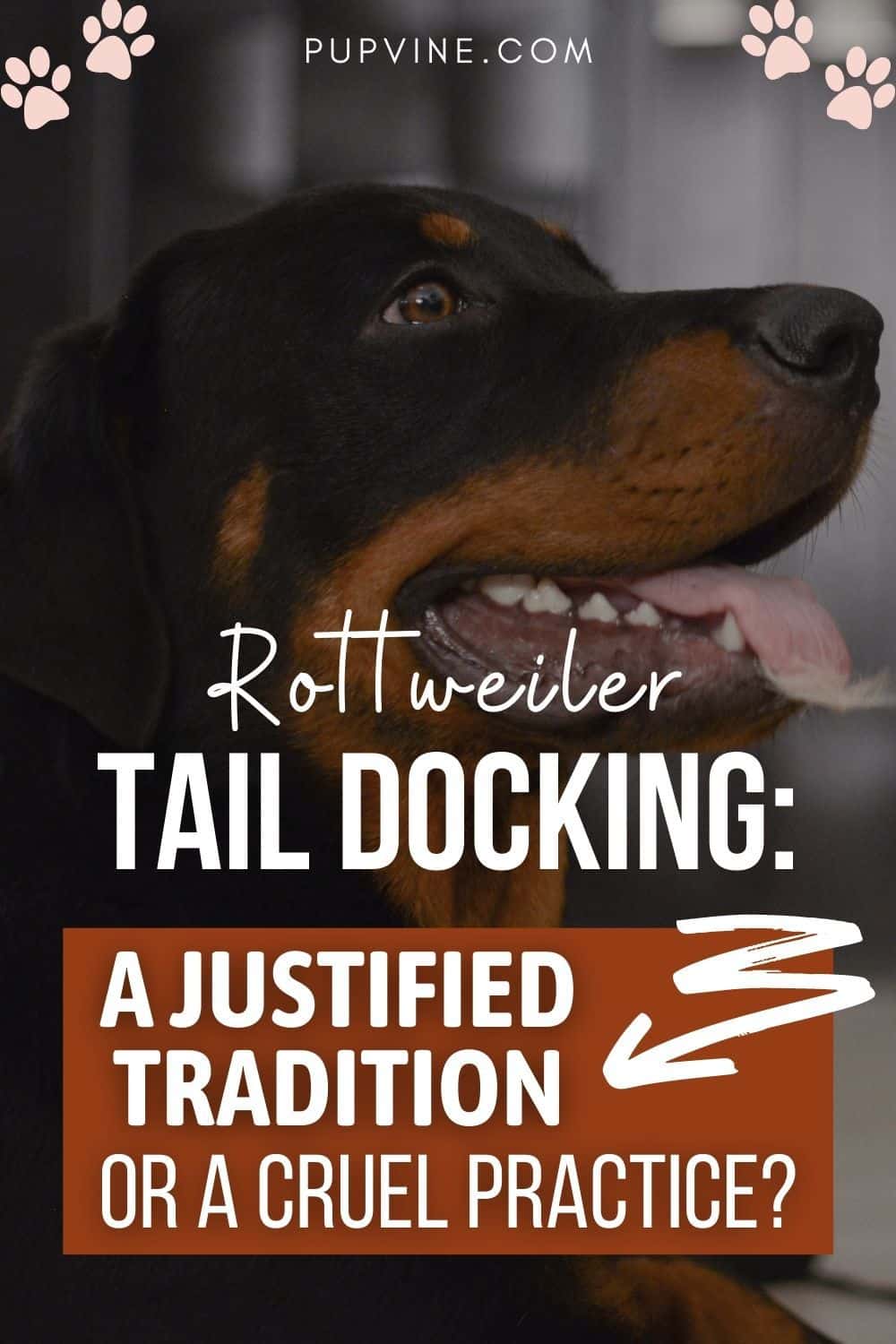
Read Next:
• What Are Rottweiler Aggression Signs And What Can Cause Them
• Happy Tail Syndrome: What Is It And Should You Be Concerned?
• Will Neutering My Rottweiler Calm Him Down? Detailed Answer













